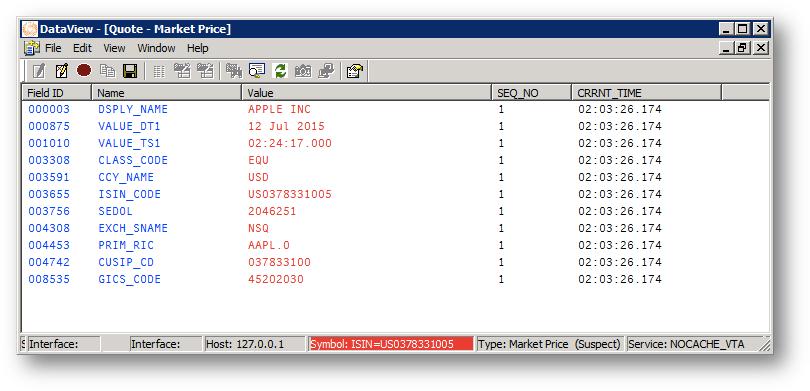Here are some pointers.
First of all: What you list as a Reuters RIC, RSF.ANY.AAPL.OQ, is not really a RIC, only the AAPL.OQ is. The initial part is some stuff which is essentially site specific and tells me that you are working on a site that has a legacy RTIC infrastructure (some Reuters/TIBCO technology which is quite old these days and for all practical purposes has been deprecated in favour of other distribution mechanisms, most notably the ADS). Ok, the AAPL.OQ is the RIC, and only that. The initial part, the RSF.ANY denotes the feed and that is because the Reuters Market Data System (an in-house ticker plant) is vendor agnostic and can have any feed on it, for example Bloomberg. So the initial part could might as well be BB.ANY in order to denote the site's Bloomberg feed. .. and then the latter part would of course be a Bloomberg symbol, not a RIC. But we are getting ahead of ourselves here and mixing technology implementation with that of instrument naming schemes, most notably the RIC and the BSYM.
With regards to how Reuters RICs are constructed you can read this guide. This document also exist on the Thomson Reuters web site but it doesn't seem to be available without registration. I just found the public link by Googling. There may be a newer version of this document but I doubt it makes much of a difference. RICs have been constructed the same way for ages.
As for the Bloomberg Symbology (BSYM) you can find more information on this link. Bloomberg has multiple identifiers to identify the same thing. Only the BBGID (Bloomberg Global ID) doesn't change with name changes, i.e it is constant over time. The downside is that it is totally meaningless. Another way to access a data item is to use a combination of the Ticker, Market and Pricing source with spaces between them.
Both Reuters and Bloomberg try to use the exchange's ticker symbol as part of their naming standard whenever possible. Unfortunately some exchanges use incomprehensible ticker symbols but that is not really the fault of Reuters or Bloomberg.
Bloomberg has made their symbology available under a very liberal "open source" license. Don't be fooled though. He who defines the universe, owns it. Without an impartial body to allocate the symbols it is really not worth much, IMHO. The difficulty in naming financial instruments lies not so much with exchange traded instruments like equities. That is rather simple: Take the exchange's own ticker symbol and then add some self-invented identifier to denote the market place. That's how both Reuters and Bloomberg do it. Nope, my friend, the difficulty (and the real lock-in) is with all the OTC instruments.


=BDP("AAPL US Equity","ID_ISIN")returns the ISIN:US0378331005and inversely,=BPD("US0378331005 ISIN","TICKER")returnsAAPL. You can do something similar with their VBA/C/C#/Java API. I'm not that familiar with Reuters but I would have thought you can do something similar. $\endgroup$=BDP("AAPL US Equity","ID_SEDOL1")=>2046251/=BDP("2046251 SEDOL1","PARSEKYABLE_DES")=>IBM US Equity. $\endgroup$AAPL.OQis hardly the equivalent of BloombergAAPL US Equity. The former is very specifically NASDAQ, the latter is not, afaik. Precision, precision, precision. $\endgroup$